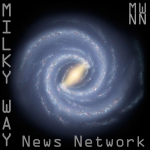“move the First Fleet to the Keyhole Nebula . . . and the Third Fleet behind the great star Carinae itself”, p.70
 Credit: NASA, Hubble Heritage Team (AURA/STScI)
Credit: NASA, Hubble Heritage Team (AURA/STScI)
For day five of Johnny Mackintosh, I’m giving you an amazing photo from the Hubble Space Telescope. My hope is that it shows the enigmatic star, Eta Carinae and the Keyhole Nebula, all embedded within the wider Carina Nebula. Sadly I’m forced to confess that, unlike Johnny, I haven’t seen it close to so am not quite sure what’s meant to be where! The Hubble Heritage Team has a separate labelled map that looks a little different, so you might try to superimpose one over the other.
The Ancient Greeks called the stars “fixed” (while the word planet means “wanderer”), but the heavens aren’t always as unchanging as they believed. Eta Carinae is classed as a hypergiant, about the biggest star there is – around a hundred times bigger than our own Sun. Its behaviour is unusual for how quickly it changes .
We should be grateful that astronomers have left meticulous records of their observations for hundreds of years. In 1677, Edmund Halley (who the comet is named after) classified Eta Carinae as “fourth magnitude”. Fifty years on, astronomers were surprised to record it as much brighter than this – perhaps Halley had made a mistake?
Yet, over the next fifty years, the star dimmed back down to where Halley had categorized it. Then, in the early 1840s, Eta Carina flared suddenly to become the second brightest star in the sky after Sirius, despite being a thousand times further away – scientists wondered if they were watching a supernova, the great explosion when a star tears itself apart. Yet the star remains in place. It quickly faded and by the start of the twentieth century had become invisible to the naked eye.
Late in 1997 Eta Carinae brightened again, so we can now see it without the aid of telescopes. There are only a very few stars in all the Milky Way of comparable size and there’s a rule – the bigger the star, the faster it burns its fuel. This means there’s a chance this giant is near the very end of its life, so we think it is one of the best candidates for a supernova in our galaxy in the near future.
Tomorrow we’re travelling back in time, to the early nineteenth century. It’s one of my favourite sections of the book.

 Subscribe to the Johnny Mackintosh RSS feed
Subscribe to the Johnny Mackintosh RSS feed 



